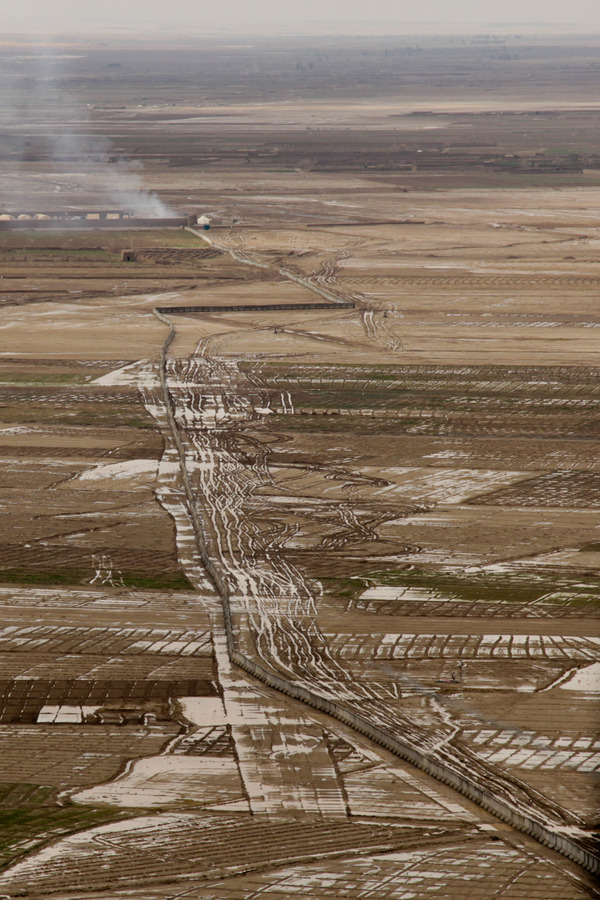Is This What Population-centric Counterinsurgency Looks Like?
In the farmland west of Kandahar City the US Army is building what it calls a “Security and Commerce Wall” as part of its strategy to protect the Afghan people. But the reaction of the local population to the wall raises the question of whether their security and commercial interests are actually being protected.
The Scotsman’s Jerome Starkey recently reported on the “split” over construction of the 50-mile long barrier in Kandahar.
On one side: U.S. troops.
On the other: the local population those troops have been sent halfway around the world to protect.
From the U.S. Army’s perspective, the wall’s construction has been a success. Over the last few months it seems to have decreased attacks on Highway One, a critical supply route connecting Kandahar with Kabul.
And the local population’s view? Well…
“’It’s a stupid plan,’ said Haji Suliman, 48, from Sangsar…‘There are many ways the Taleban can use, and now some fields are so wet, we can’t farm them.’”
Starkey reports that during recent rains the wall turned into a dam that flooded fields on one side while keeping those on the other side starved for water. More than 56 sections of the barrier washed away because culverts for rainwater weren’t included, “…lest they provide places for homemade bombs, or tunnels for insurgents to crawl through.”
Come to think of it, a few tunnels might have increased local support for the wall, as insurgents aren’t the only ones whose freedom of movement has been denied. Many farmers’ fields are now separated from their homes by concrete.
US troops told Starkey they recognized that the wall would make life more difficult for locals in the short term. But it’s hard to see how locals will ever benefit from its construction.
Protection of the highway wasn’t a security concern for local people in the first place. As an Army captain told Starkey, “The road was always open, but if you were a soldier or a contractor and you drove through Zhari, you were going to get shot at. Private security convoys were harassed multiple times a day.”
Ay, there’s the rub with the counterinsurgency enterprise in Afghanistan.
A 50-mile long concrete wall is built through rural Kandahar to protect foreign troops and security contractors while they fight the insurgency…
…however the foreign troops can only defeat the insurgency by winning the local population’s support through providing economic development and security…
..but the population’s biggest security concern is the fighting between foreign troops and insurgents that rages around them…and their economic development is paralyzed by 50-mile long concrete walls that threaten their ability to provide for themselves…
…so instead of driving a wedge between insurgents and the population, counterinsurgency strategy as practiced in Kandahar is further dividing US troops from the people they are risking their lives to protect…
…which strengthens the insurgency…
…which is bad news for U.S. troops in harms way and Afghan civilians caught in the middle…
…but which is very good business for contractors who build walls in warzones…
…which is very bad news for U.S. taxpayers who are paying millions of dollars for a 50-mile long concrete wall in rural southern Afghanistan.



2 Responses to Is This What Population-centric Counterinsurgency Looks Like?
this is nuts !! when the military goes to war the troops are going to be shot at thats part of the job,but this looks like an added waste of money to protect the defence contractors and for some reason we keep takeing two steeps backwards and call it progress stop the madness pullout of afghanistan i’m sure they would sell us the lithieum ione and poppies for food
Pingback: The Demolition of Afghanistan Is Going Swell, When Does the Rebuilding or New Construction Start? « Therearenosunglasses’s Weblog